Bing Ads vs Google Ads: Which Is Better for Your Business?
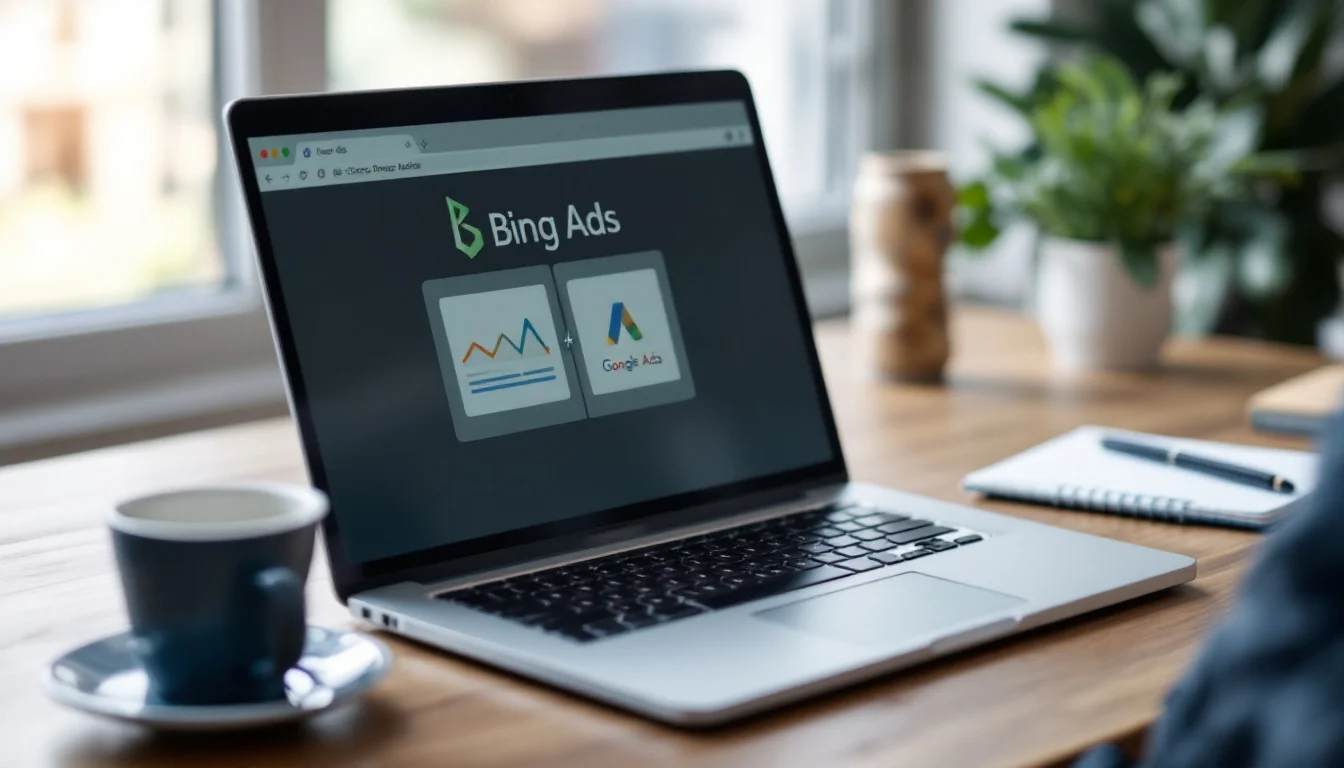
At Drop Cowboy, we understand the importance of choosing the right advertising platform for your business. When it comes to digital advertising, two giants stand out: Bing Ads and Google Ads.
In this post, we’ll compare Bing Ads vs Google AdWords to help you make an informed decision. We’ll explore their market reach, cost-effectiveness, and unique features to determine which platform aligns best with your business goals.
Who Reaches More Users: Comparing Bing Ads and Google Ads
Google Ads dominates the digital advertising landscape with an impressive 91.20% market share of global searches. This translates to over 8.5 billion searches processed daily, giving advertisers unparalleled reach. In contrast, Bing Ads captures about 5% of total searches in the US, which might seem small but still represents a significant audience.
Age and Income Demographics
Bing’s user base skews older and more affluent. Recent data shows that 54% of Bing users are married, and 59% have children. This demographic tends to have higher household incomes, making Bing an attractive platform for luxury goods and B2B services. Google, on the other hand, attracts a younger, more diverse audience, ideal for mass-market products and trendy consumer goods.
Professional Targeting
Bing Ads offers unique advantages for B2B marketing. Its integration with LinkedIn allows advertisers to target professionals based on job functions and industries. This feature proves particularly valuable for companies selling high-ticket items or services to corporate clients (think enterprise software or consulting services).
Geographic Reach
Google Ads provides broader global coverage, making it the top choice for international campaigns. However, Bing Ads can be more effective for regional targeting, especially in North America and parts of Europe where it has a stronger presence. Advertisers looking to reach specific local markets might find Bing’s less saturated ad space advantageous (particularly for niche or location-specific businesses).
Mobile vs Desktop Users
Google dominates mobile search, processing 95% of all mobile queries. This makes Google Ads essential for businesses targeting on-the-go consumers. Bing, while lagging in mobile, still captures a significant portion of desktop searches, particularly in office environments where Bing is often the default search engine.
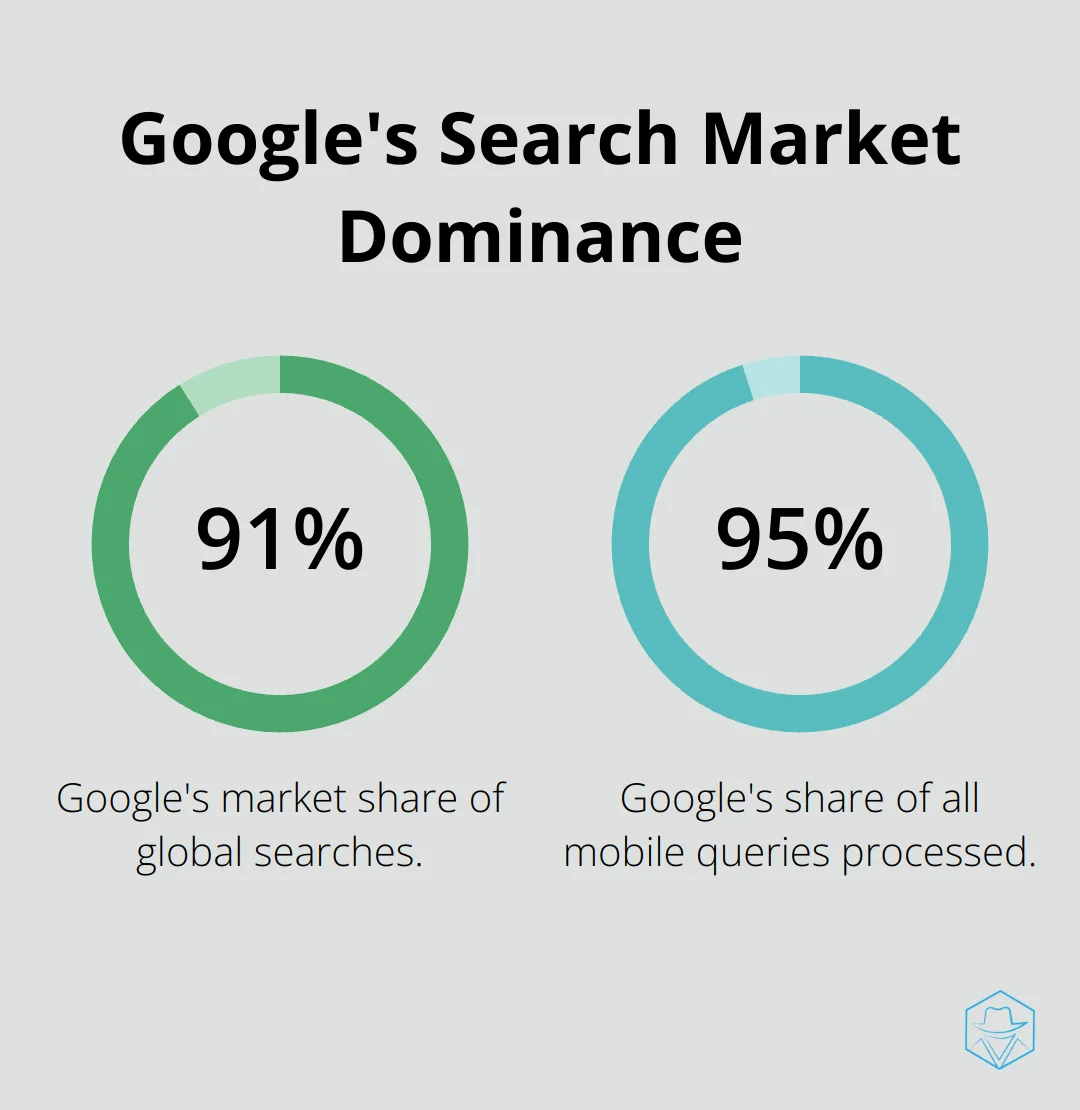
As we move forward, it’s important to consider how these audience differences impact the cost and return on investment for each platform. Let’s examine the financial aspects of Bing Ads and Google Ads to help you make an informed decision for your advertising strategy.
Which Platform Offers Better Value for Your Ad Spend?
Cost-Per-Click Comparison
Google Ads and Bing Ads differ significantly in their cost-per-click (CPC) structures. Google Ads, with its larger user base and increased competition, typically demands higher CPCs. Recent data from WordStream reveals an average CPC of $2.69 for Google Ads across all industries. Bing Ads, on the other hand, presents a more budget-friendly option with an average CPC of $1.54.
These figures fluctuate considerably across industries. In the legal sector, for instance, Google Ads’ average CPC can reach $6.75, while Bing Ads remains more affordable at $2.37. E-commerce businesses might find Google Ads more appealing with an average CPC of $1.16, compared to Bing’s $1.54.
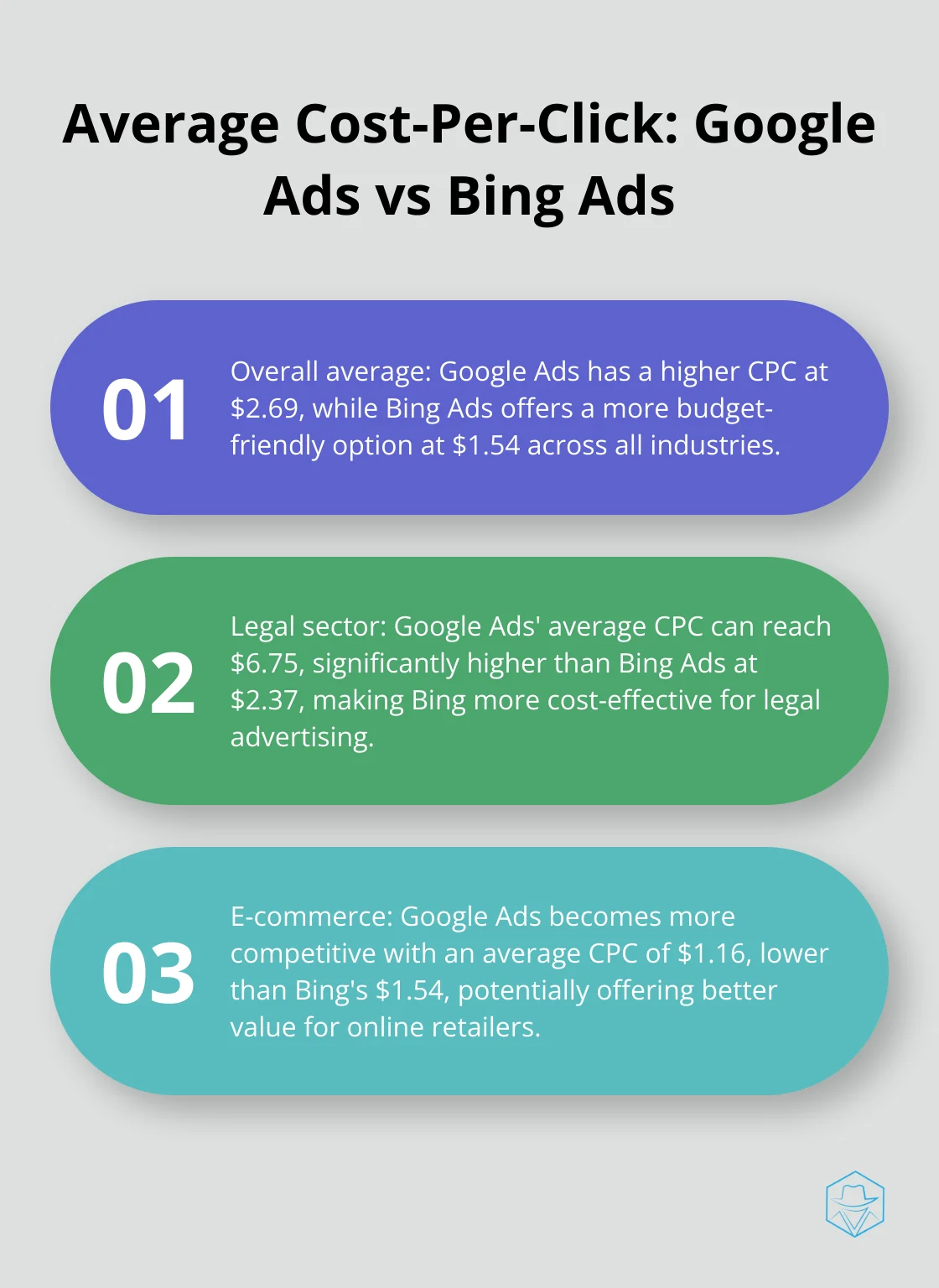
Engagement Metrics: Click-Through and Conversion Rates
While costs play a crucial role, engagement metrics provide equally valuable insights. Google Ads boasts an average click-through rate (CTR) of 3.17% across search and display networks. Surprisingly, Bing Ads outperforms in this area with an average CTR of 3.83%, despite its smaller market share.
Conversion rates tell a similar story. Google Ads achieves an average conversion rate of 3.75% across industries, while Bing Ads reaches a respectable 2.94%. However, in certain sectors (such as finance and insurance), Bing Ads takes the lead with conversion rates up to 5.13%.
Budget Management and Flexibility
Both platforms offer robust tools for budget control, but their approaches differ. Google Ads provides more granular control options, including shared budgets and automated bidding strategies. These features benefit businesses with complex campaigns spanning multiple products or services.
Bing Ads offers fewer automated options but provides a simpler interface that many small to medium-sized businesses find more approachable. Its import feature allows easy migration of Google Ads campaigns, making it an excellent secondary platform for expanding reach without significant additional effort.
Cost Per Acquisition Considerations
While Google Ads might appear more expensive initially, its vast reach often translates to a lower cost per acquisition (CPA) for many businesses. However, Bing Ads can offer excellent value in specific niches, particularly those targeting older, more affluent demographics.
The choice between these platforms depends on your specific goals, target audience, and budget. Many advertisers use both platforms strategically, allocating budgets based on performance metrics and audience targeting opportunities. As we move forward, let’s examine the unique features and ad formats each platform offers to help you make an informed decision for your advertising strategy.
How Do Bing Ads and Google Ads Compare in Features?
Ad Formats: Text to Visual Spectrum
Google Ads offers a broader range of ad formats compared to Bing Ads. Both platforms provide standard text ads, but Google excels with its responsive search ads. These ads automatically adjust their content to match user queries (potentially improving click-through rates).
Google’s Display Network reaches over 90% of internet users worldwide. This extensive reach allows advertisers to create engaging image and video ads across millions of websites. Bing Ads, while more limited in scope, offers multimedia ads that combine images with text (which can be particularly effective for certain industries).
Targeting Precision: Demographics and Beyond
Both platforms offer robust targeting options, but Google Ads provides more granular controls. Google allows advertisers to target based on detailed demographics, interests, and even life events. This level of precision proves invaluable for businesses with niche products or services.
Bing Ads, however, has a unique advantage in B2B advertising. Its integration with LinkedIn data allows for targeting based on job function, industry, and company size. This feature makes Bing Ads particularly attractive for businesses selling to other businesses or professionals.
Analytics and Reporting: Data-Driven Decision Making
Google Analytics integration gives Google Ads a significant edge in reporting capabilities. The depth of data available allows advertisers to track user behavior from ad click to conversion, providing insights that can inform future campaign strategies.
Bing Ads, while not as comprehensive, offers clear and user-friendly reporting tools. Its interface often receives praise for being more intuitive, which can benefit small businesses or those new to PPC advertising.
Platform-Specific Advantages
Google Ads stands out with its advanced AI capabilities, which optimize ad presentation across diverse platforms. This enhances reach and effectiveness for advertisers looking to maximize their campaign impact.
Bing Ads, on the other hand, allows for device-level targeting. This feature helps advertisers fine-tune campaigns based on specific device performance, which can lead to more efficient ad spend allocation.
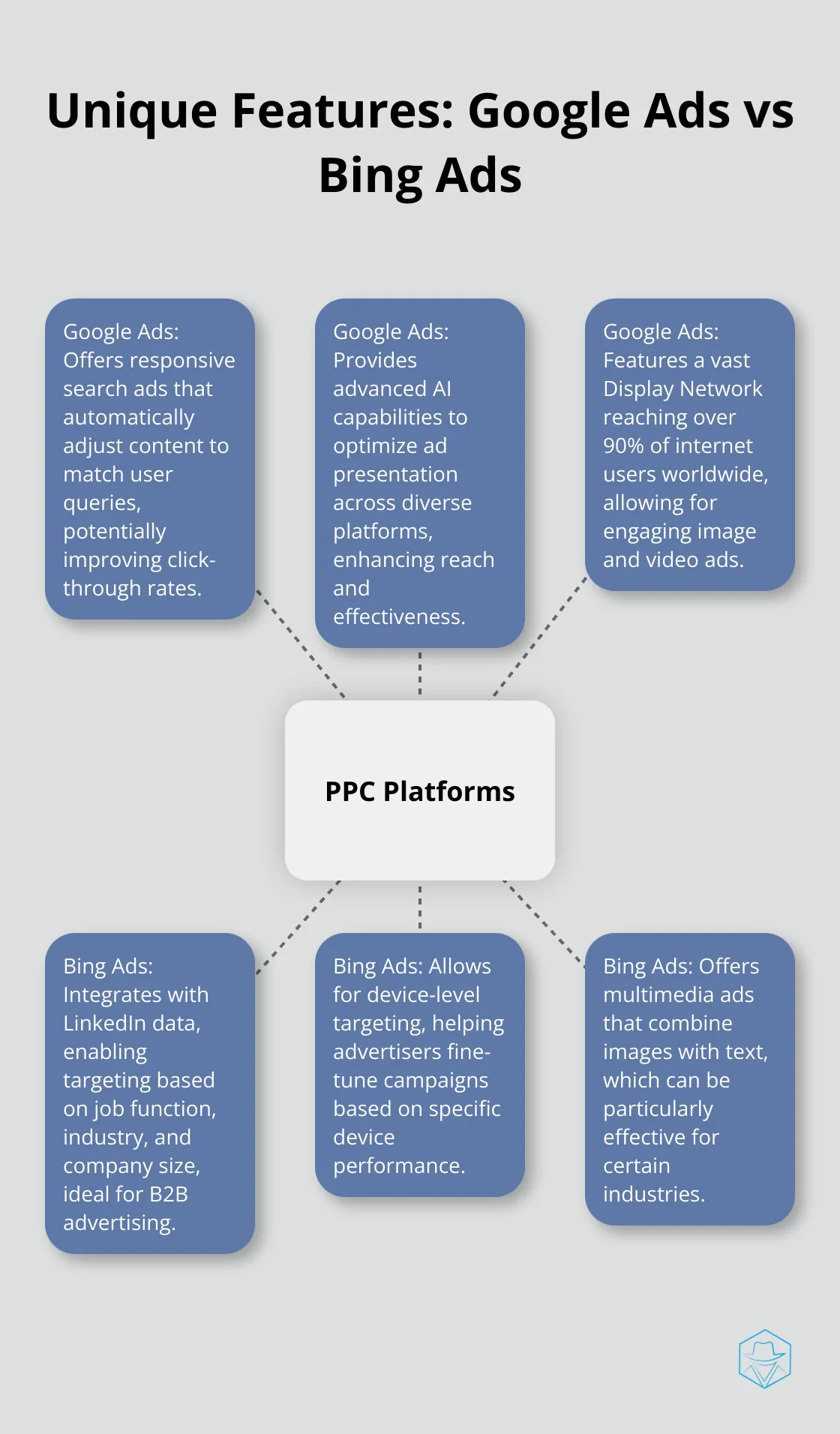
Budget Management and Flexibility
Google Ads provides more granular control options, including shared budgets and automated bidding strategies. These features benefit businesses with complex campaigns spanning multiple products or services.
Bing Ads offers fewer automated options but provides a simpler interface that many small to medium-sized businesses find more approachable. Its import feature allows easy migration of Google Ads campaigns, making it an excellent secondary platform for expanding reach without significant additional effort.
Final Thoughts
Bing Ads and Google AdWords each offer unique advantages for different business needs. Google AdWords dominates with its vast reach and advanced features, while Bing Ads provides a compelling alternative for targeting older, affluent demographics and B2B markets. A hybrid approach often yields the best results, allowing businesses to capitalize on Google’s extensive reach and Bing’s cost-effectiveness.
To maximize ROI on either platform, create highly relevant ad copy and landing pages. Review and refine your keyword strategy regularly, and use negative keywords to filter out irrelevant traffic. Take advantage of each platform’s unique features (such as Google’s responsive search ads and Bing’s LinkedIn targeting) to enhance campaign performance.
Successful PPC advertising requires ongoing optimization and monitoring of campaigns. Test different ad variations and adjust bids based on performance data. Consider using Drop Cowboy to complement your PPC efforts with targeted ringless voicemail and SMS campaigns, enhancing your overall marketing strategy and customer engagement.
blog-dropcowboy-com
Related posts

July 1, 2025
Choosing the Right Dialer for Your Call Center
Choose the best dialer for your call center with our practical guide, helping streamline operations and maximize efficiency in customer outreach.

March 27, 2025
How to Choose the Right iPaaS Solution for Your Business
Discover essential tips to choose the right iPaaS solution for your business and streamline integration for better efficiency and growth.
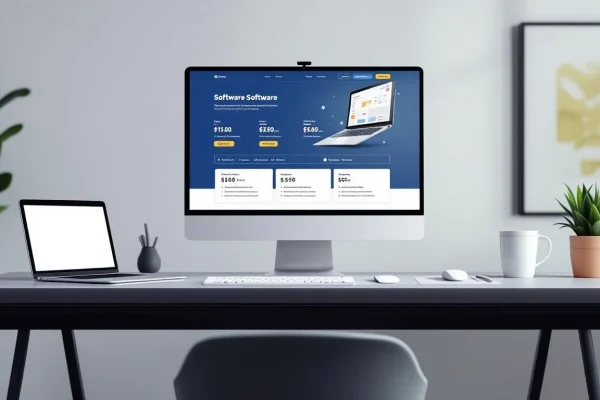
July 20, 2025
How Much Does Trumpia Cost? Pricing Explained
Explore Trumpia pricing, features, and compare plans. Find the best value for your messaging needs and boost your communication strategy efficiently.
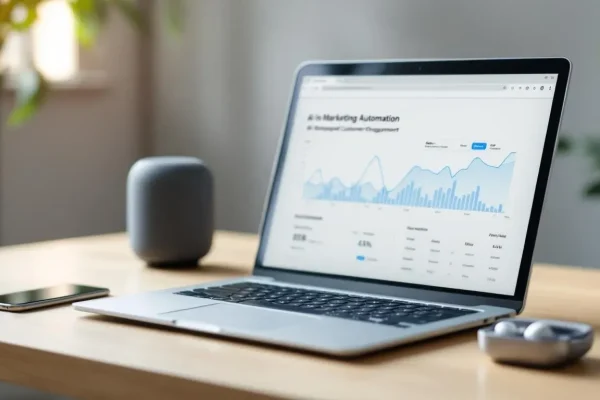
March 21, 2025
AI in Marketing Automation: Transforming Customer Engagement
Explore how AI in marketing automation is reshaping customer engagement by boosting personalization, efficiency, and driving growth rapidly.
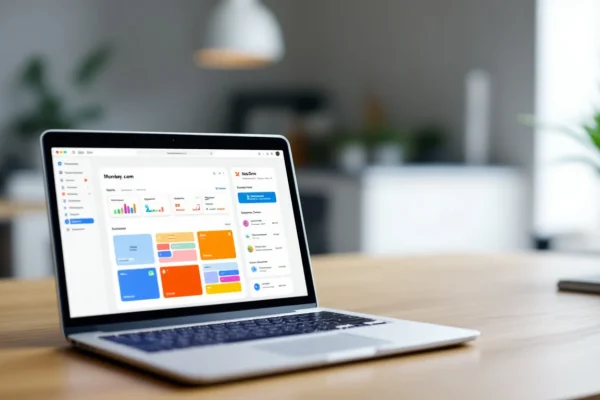
May 6, 2025
Monday or HubSpot: Choosing Your Ideal CRM
Compare Monday vs HubSpot to find your perfect CRM match. Discover features, pricing, and benefits to boost your business efficiency.
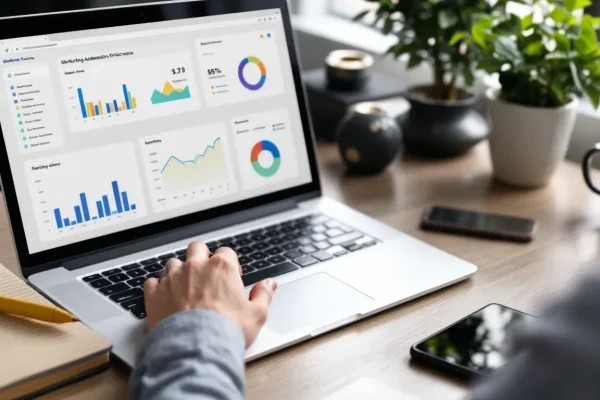
April 4, 2025
Marketing Automation Example: Boosting Conversions
Boost conversions with a marketing automation example that highlights practical tips, tools, and real-world data for enhanced lead generation.